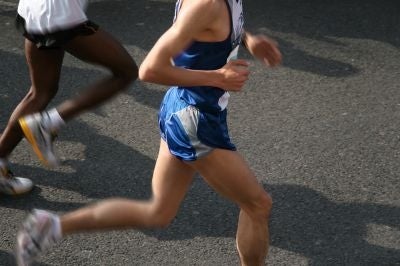Your support helps us to tell the story
From reproductive rights to climate change to Big Tech, The Independent is on the ground when the story is developing. Whether it's investigating the financials of Elon Musk's pro-Trump PAC or producing our latest documentary, 'The A Word', which shines a light on the American women fighting for reproductive rights, we know how important it is to parse out the facts from the messaging.
At such a critical moment in US history, we need reporters on the ground. Your donation allows us to keep sending journalists to speak to both sides of the story.
The Independent is trusted by Americans across the entire political spectrum. And unlike many other quality news outlets, we choose not to lock Americans out of our reporting and analysis with paywalls. We believe quality journalism should be available to everyone, paid for by those who can afford it.
Your support makes all the difference.Runners, is the pre-run stretch a thing of the past? The subject of stretching is a source of hot debate in sports, and new research says it doesn't prevent injury.
Research by Maryland-based orthopedic surgeon Dan Pereles, MD - presented February 18 at the 2011 Annual Meeting of the American Academy of Orthopaedic Surgeons (AAOS) - recruited about 3,000 runners and divided them into two groups. One group did three to five minutes of static stretching before each run. The other group just took off running without stretching. Both groups had a mix of men and women of different ages and running abilities. After three months, Pereles found that 16 percent of the runners sustained an injury, but the stretchers were no better off than the non-stretchers.
So, should you stop stretching? Not necessarily, says Pereles. In his study, those runners who were in the habit of stretching before running and were put in the "no-stretch" group sustained more injuries. "So if you're used to stretching, you should still do it," Pereles told NPR (US-based National Public Radio). Also runners who had a higher body mass index or a history of injuries sustained more injuries than others in the study.
"But, the more mileage run or the heavier and older the runner was, the more likely he or she was to get injured," Pereles said.
New trends in track and field coaching in the US suggest that a technique called "active isolated stretching" might protect runners from injuries better than traditional bend-and-hold techniques. Developed by trainer Aaron Mattes and used by massage therapists, physical therapists, and coaches, the technique emphasizes gentle, fluid repetitions of two- to three-second holds with more repetitions.
Read more about the study and AAOS presentation:
http://www6.aaos.org/news/pemr/releases/release.cfm?releasenum=974
http://www3.aaos.org/education/anmeet/anmt2011/podium/podium.cfm?Pevent=648
To read more on NPR and watch a video demonstration of active isolated stretching: http://www.npr.org/templates/story/story.php?storyId=130509347&ps=cprs
Aaron Mattes discusses and demonstrates his stretching technique here: http://www.youtube.com/watch?v=NqPpJBXRQvk

Join our commenting forum
Join thought-provoking conversations, follow other Independent readers and see their replies
Comments